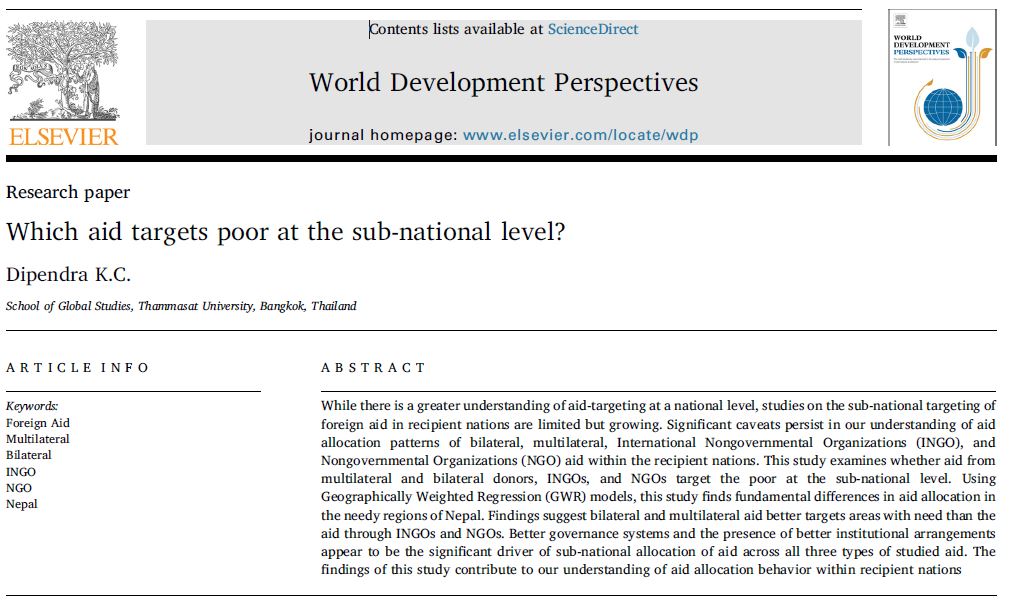While there is a greater understanding of aid-targeting at a national level, studies on the sub-national targeting of foreign aid in recipient nations are limited but growing. Significant caveats persist in our understanding of aid allocation patterns of bilateral, multilateral, International Nongovernmental Organizations (INGO), and Nongovernmental Organizations (NGO) aid within the recipient nations. This study examines whether aid from multilateral and bilateral donors, INGOs, and NGOs targets the poor at the sub-national level. Using Geographically Weighted Regression (GWR) models, this study finds fundamental differences in aid allocation in the needy regions of Nepal. Findings suggest bilateral and multilateral aid better targets areas with need than aid through INGOs and NGOs. Better governance systems and the presence of better institutional arrangements appear to be the significant driver of sub-national allocation of aid across all three types of studied aid. The findings of this study contribute to our understanding of aid allocation behavior within recipient nations.
